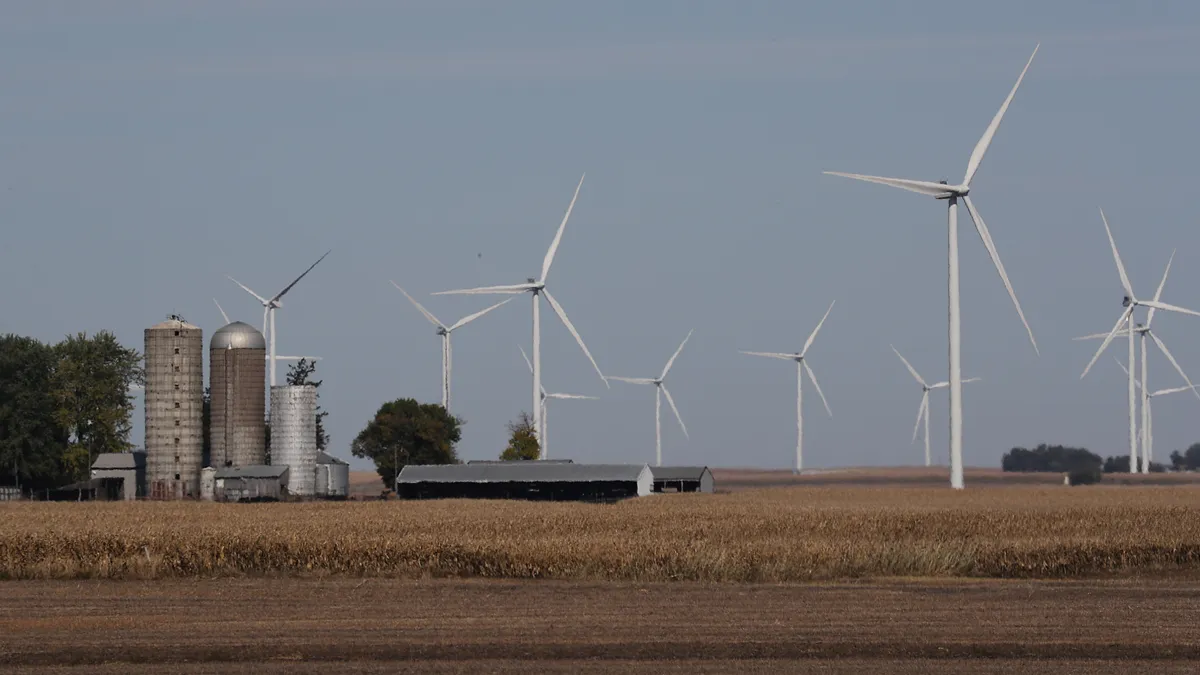Dive Brief:
-
The Illinois Power Agency has released a proposed long-term renewable energy procurement plan that includes extensive new rules related to equity, in line with the requirements of the state's new Climate and Equitable Jobs Act.
-
The proposed plan establishes requirements for applying for an enlarged body of state renewable energy grants and funds, revises the state's renewable energy credits pricing model, and loosens restrictions on the use of funds intended to increase access to solar power among low-income communities, among other provisions.
-
Illinois environmental advocates praised the overall plan, which must be approved by the Illinois Commerce Commission, as "a critical step forward," although they noted that some aspects of the plan that relate to new community initiatives created by the Climate and Equitable Jobs Act may need to be fine-tuned in the future.
Dive Insight:
Illinois is one step closer to tying the state's vision for an equitable job market to its renewable energy ambitions.
A revised long-term renewable resources procurement plan, released Monday by the Illinois Power Agency, aims to finalize rules and programs called for in the Climate and Equitable Jobs Act, signed into state law on Sept. 15. While environmental advocates in the state anticipate some adjustments will need to be made in the months and years ahead, they generally praised the plan for supporting an accelerated energy transition and tying equity to the success of that transition.
"The Illinois Power Agency's (IPA) newly revised 2022 Long-Term Renewable Resources Procurement Plan is a critical step forward in the implementation of the Climate and Equitable Jobs Act," Peter Chung, programs coordinator for Sierra Club Illinois, said in a statement. "While the Renewable Resources Procurement Plan is not perfect, the plan builds on the tenets and policies set forth in CEJA to ensure our shared renewable energy future."
The Climate and Equitable Jobs Act raised the bar for the state's electrical generation, setting a new goal for renewable energy to represent 40% of energy generated by 2030 and 50% by 2040. It also increased funding for state renewable energy initiatives, and called for the integration of equity standards into funding opportunities and bids on future energy projects. Contractors seeking renewable energy credits will be required to meet minimum criteria for equity and inclusion in their workforce, and those that meet additional criteria will receive beneficial price adjustments during the bidding process to compete in procedures that require selection of the lowest-cost bid.
Perhaps the most significant outcome of the new plan, according to John Delurey, senior Midwest director for Vote Solar, is a series of revamped rules for the Illinois Solar for All program. Although the program has existed since 2016 and has succeeded in meeting its goals with respect to community solar installations and solar projects for nonprofit organizations, the program's residential arm has gone underutilized, Delurey said. The IPA's new plan aims to remove barriers to solar for low-income residents by creating new customer classes for renters, allocating funding to address issues such as outdated electrical panels, and allowing for increased marketing of the program to low-income residents.
Although Illinois utilities are still reviewing the specifics of the plan, a spokesperson for Commonwealth Edison, Exelon's Chicago-based utility, pointed to the Tuesday launch of a new community solar project supported by the Solar for All program as evidence of how the plan could impact their operations and spur increased deployment of renewable energy.
Delurey and Chung also pointed to the creation of two new pilot programs aimed at identifying additional barriers to access, as last-minute, but positive, additions to the plan.
"These types of pilot programs are a crucial step forward in creating innovative avenues for equitable renewable energy progress," Chung said. "We are hopeful these programs will be successful so that they can be implemented as long-term climate solutions in the future."
The Climate and Equitable Jobs Act also called for the reallocation of funds available under the state's Adjustable Block Program, historically divided three ways among small distributed generation, large distributed generation, and community solar projects. The new plan would split the funds six ways, creating new programs for solar panels at public schools, community-driven community solar projects, and "equitable eligible contractors"—a category intended to benefit disadvantaged businesses in the renewable energy sector.
But the way the new plan interprets criteria for these new categories, Delurey said, may be too restrictive and lead to underuse. For example, the contractors category requires every participant in a project to qualify as disadvantaged in order to receive funds.
"There are elements of the plan I am really excited about, and that I think reflect the initial intent and spirit of [The Climate and Equitable Jobs Act], and a couple other elements I'm somewhat less excited about," Delurey said. "I think there's going to be a lot of learning in the first year or two about how do we implement these things really well."














